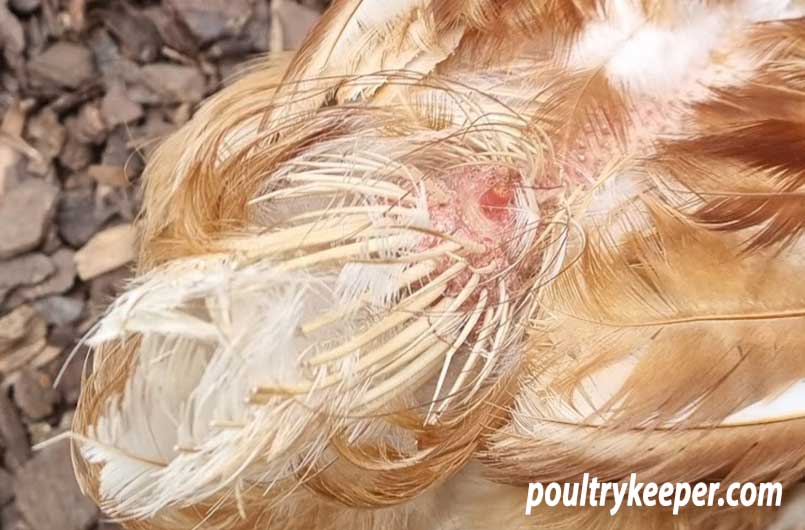
Depluming mites (known in Latin as Knemidocoptes gallinae) are one of the less well-known poultry parasites. This mite is related to the scaly leg mite (Knemidocoptes mutans) though each mite prefers to inhabit a different region of the body with the depluming mite preferring feathered areas whilst the scaly leg mite prefers to burrow into the featherless skin on the legs.
The depluming mite can infect most backyard fowl including chickens, ducks and geese. The mite burrows into the feather shafts and the skin surrounding the feathers. This burrowing causes damage to the skin and feathers, causing fluid to ooze out. It is this fluid on which the mites feed. As the mites burrow into the feathers, the pain can be sufficient enough to cause the bird to pull out its own feathers hence the name ‘the depluming mite’.
Symptoms of depluming mites
There are some symptoms to look out for, that are common in chickens with depluming mites:
- Birds pulling out their own feathers.
- Broken feathers.
- Un-kept feathers.
- Thickened, scaly, crusty skin at the base of the feathers.
- Small blister-like areas of damage on the skin.
If the numbers of mites reach sufficient levels the mites can cause severe irritation to the bird and can lead to weight loss and lower than normal numbers of eggs to be laid. In rare cases, if mites reach very high levels the birds can even die.
Usually seeing birds pulling out their own feathers is enough to warrant treating the birds for depluming mites, however, if you want to be certain, then your vet can take skin scrapings from damaged areas of skin to look for the mites.
Life cycle
The mite spends its entire life on the bird and, as such, cannot survive in the environment without birds. The mite is transmitted between birds by direct contact.
The mite can reach adulthood in as little as 17 days and prefers to reproduce in the spring/summer months. Many birds often carry low numbers of mites, and when they are stressed, the mite numbers grow rapidly. Interestingly this mite gives birth to live young rather than laying eggs.
Treating depluming mites
Treatment is problematic since mite powders will be unable to reach these mites in their burrows. This means that an anti-parasitic preparation such as Ivermectin would need to be used. However, it would be best if you remembered that such a treatment is not licensed for chickens and other poultry, and your prescribing vet will need to advise you on a suitable egg withdrawal time (this will be a minimum of 7 days).
Do you have a photo of a chicken with depluming mites you would be willing for me to use here? I’m looking to add some additional photos. Please contact me if you can help.


